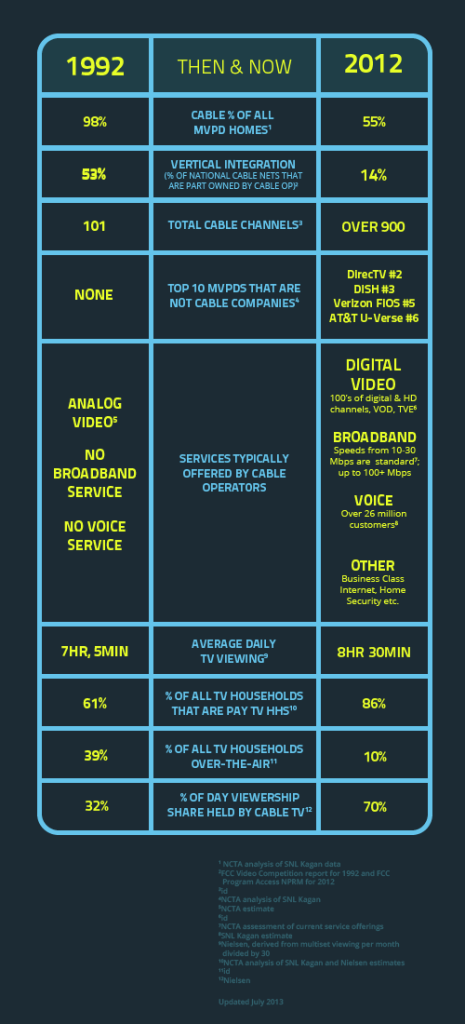Speaking on Thursday to a Federalist Society audience, FCC Commissioner Ajit Pai noted how dramatically the video marketplace has changed since the Cable Act of 1992.
“It’s no surprise,” Pai said, “when you look at some of the legislative history of the Cable Act, you see statements that ring hollow to the modern ear.”
Pai’s statement underscores just how radically the video entertainment marketplace has changed over the past two decades. In 1992, traditional cable operators represented 98% of the pay-TV universe. But today, 4 of the top 8 pay TV providers are satellite and telco companies. And this isn’t counting new players like Netflix, which claims to have amassed over 30 million US subscribers. The explosion of programming choices reflects a more dynamic video ecosystem with many more choices. Pai’s remarks affirmed this reality, noting that most Americans have at least three multi-channel video providers to choose from and further noting that consumers today, especially from younger generations, no longer distinguish the content from the medium.
They are, as he stated, “completely indifferent as to the distribution platform, and even to the device that’s being used.” It’s no surprise that this new marketplace is calling into question some of the original motivations that led to government intervention. Pai suggests it’s time for the FCC to “exercise regulatory humility,” understanding that yesterday’s rules are not keeping up today’s realities. We say, “Well said!”
To better understand just how far the video marketplace has come since The Cable Act of 1992, see the chart below.
